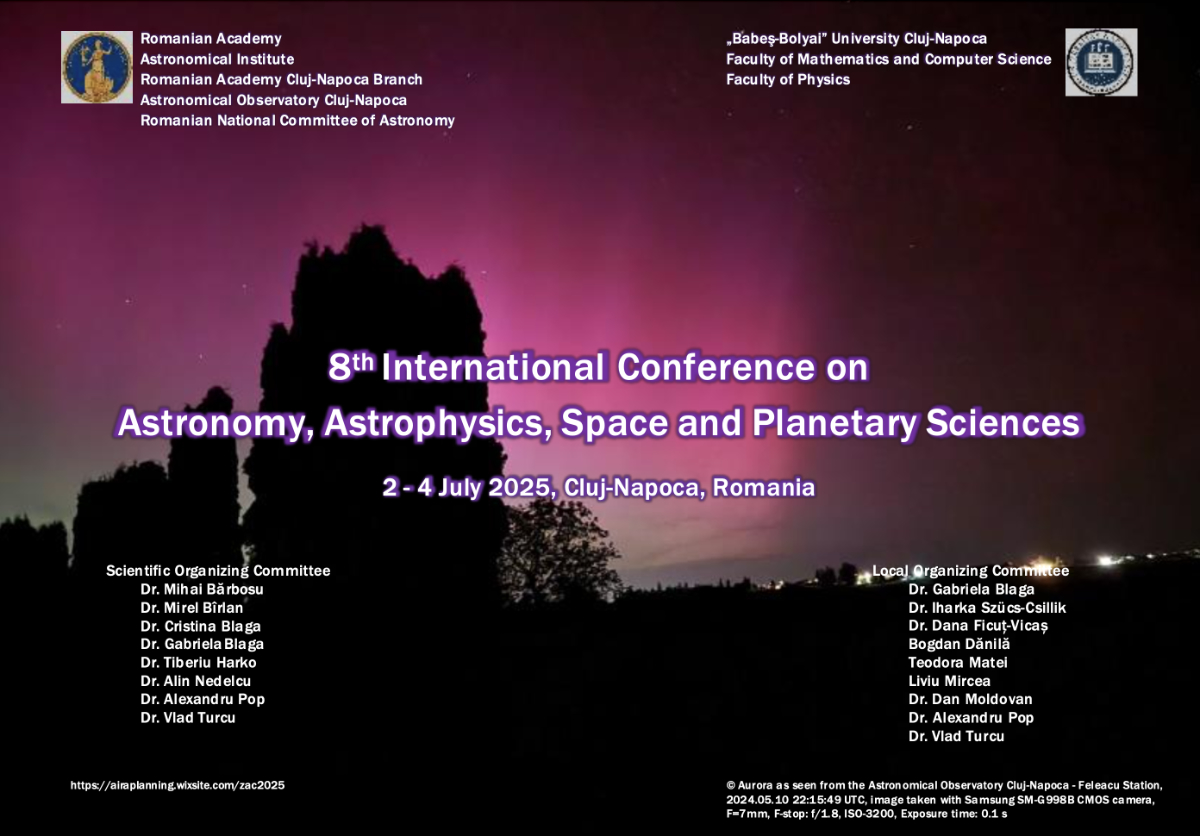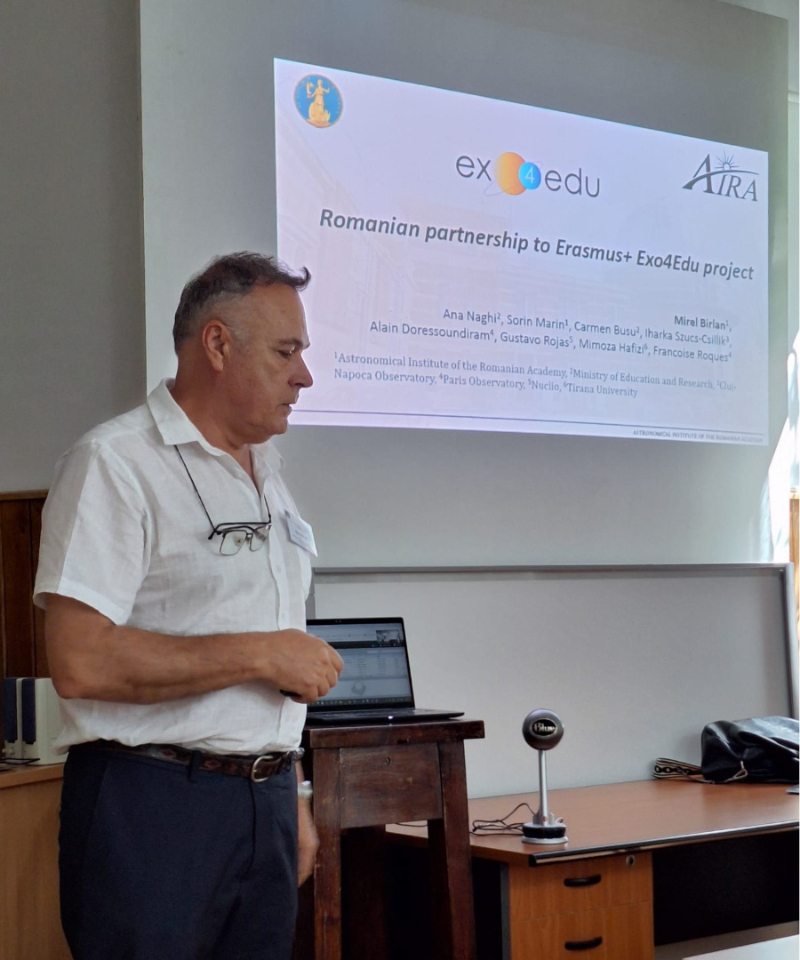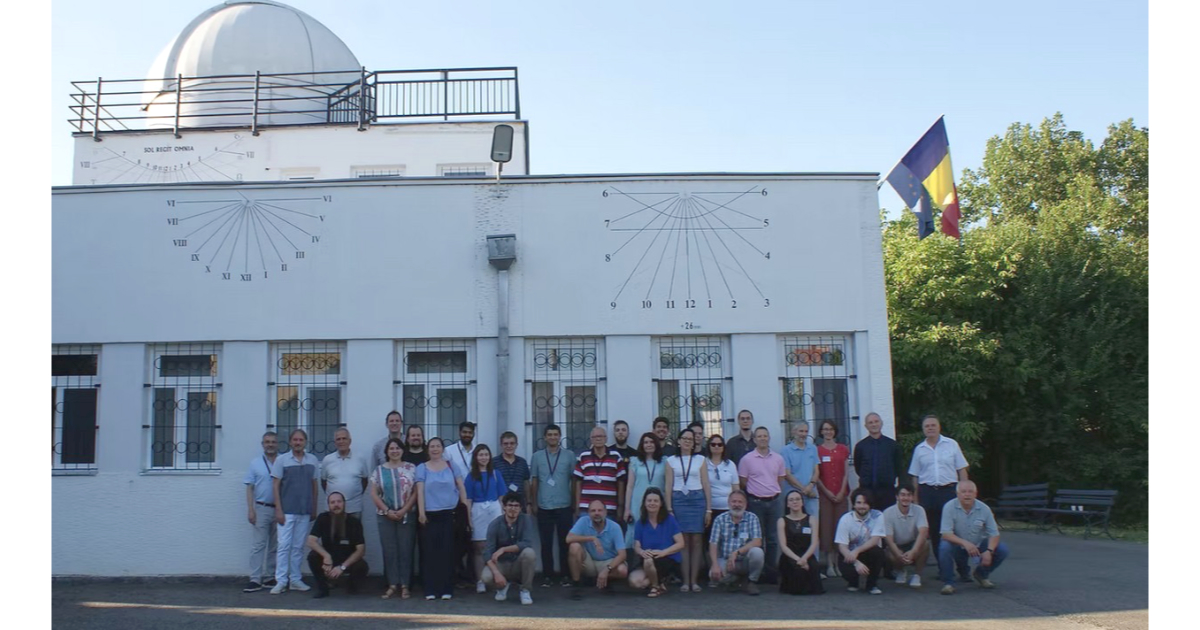The Astronomical Observatory Cluj-Napoca, part of the Romanian Academy’s Astronomical Institute, held the eighth edition of the International Conference on Astronomy, Astrophysics, and Planetary Sciences from July 2 to July 4, 2025. This event convened experts from various countries, including Brazil, Canada, China, France, Germany, Serbia, Spain, the USA, Hungary, Uzbekistan, and Romania (Fig. 1).

In the course of the plenary sessions, the authors of the scientific papers engaged in discussions concerning subjects associated with artificial satellites (encompassing trajectory, observation, and reentry calculations), asteroids, variable stars, cosmology, astrometry, celestial mechanics, solar physics, spectroscopy, astronomy education, and a range of themes from the inter and multidisciplinary knowledge spectrum.
The Exo4Edu presentation (Birlan, Mirel; Naghi, Ana; Marin, Sorin; Busu, Carmen; Szucs-Csillik, Iharka; Doressoundiram, Alain; Rojas, Gustavo; Hafizi, Mimoza; Roques, Francoise: Romanian partnership to Erasmus+ Exo4Edu project ), part of the European Union’s ERASMUS+ initiative, aims to improve the skills of secondary school teachers and their students in the STEAM disciplines, as well as foster the development of additional competencies (Fig. 2).
This initiative encompasses a thorough array of instruments featuring a current database on exoplanets, along with scientific resources that corresponds with this collection.
Exo4Edu (Key Action Project involving four entities from France, Portugal, Romania, and Albania) develops programs and offers training for educators on how to effectively use the toolkit with their students. Well-trained teachers are better prepared to address STEAM subjects, leading to improved understanding among students.
Both educators and learners can access and evaluate up-to-date information regarding exoplanets. They employ a scientific inquiry methodology utilizing analytical tools to derive novel findings pertinent to a contemporary scientific domain: the quest for habitable planets.
Moreover, the Astronomical Institute of the Romanian Academy (AIRA) collaborates with the University of Tirana in overseeing the initiatives associated with creating the educational framework necessary for the effective execution of the project.


Furthermore, among the presentations was one (Pop, Alexandru; Craciun, Maria: On the importance of estimation of statistical significance of spectral features in amplitude spectra of astronomical time series) that outlines the methodological aspects related to the potential application of a recently introduced approach in the analysis of astronomical time series, aimed at disentangling Keplerian signals and stellar activity signals in exoplanetary radial velocity data (Fig. 3).

The study of exoplanets featured in several presentations at the international conference conducted in Cluj-Napoca in 2025, also directing the research emphasis of the conference towards current scientific investigations.
The conference group photo (Fig. 4) captured the collective spirit and collaboration of the attendees, showcasing the diverse backgrounds and expertise present at the event. This visual representation serves as a lasting memory of the discussions and connections made during the conference, highlighting the importance of networking and knowledge sharing among professionals in the huge field of Astronomy.
